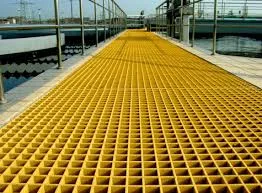
-
 Afrikaans
Afrikaans -
 Albanian
Albanian -
 Amharic
Amharic -
 Arabic
Arabic -
 Armenian
Armenian -
 Azerbaijani
Azerbaijani -
 Basque
Basque -
 Belarusian
Belarusian -
 Bengali
Bengali -
 Bosnian
Bosnian -
 Bulgarian
Bulgarian -
 Catalan
Catalan -
 Cebuano
Cebuano -
 China
China -
 China (Taiwan)
China (Taiwan) -
 Corsican
Corsican -
 Croatian
Croatian -
 Czech
Czech -
 Danish
Danish -
 Dutch
Dutch -
 English
English -
 Esperanto
Esperanto -
 Estonian
Estonian -
 Finnish
Finnish -
 French
French -
 Frisian
Frisian -
 Galician
Galician -
 Georgian
Georgian -
 German
German -
 Greek
Greek -
 Gujarati
Gujarati -
 Haitian Creole
Haitian Creole -
 hausa
hausa -
 hawaiian
hawaiian -
 Hebrew
Hebrew -
 Hindi
Hindi -
 Miao
Miao -
 Hungarian
Hungarian -
 Icelandic
Icelandic -
 igbo
igbo -
 Indonesian
Indonesian -
 irish
irish -
 Italian
Italian -
 Japanese
Japanese -
 Javanese
Javanese -
 Kannada
Kannada -
 kazakh
kazakh -
 Khmer
Khmer -
 Rwandese
Rwandese -
 Korean
Korean -
 Kurdish
Kurdish -
 Kyrgyz
Kyrgyz -
 Lao
Lao -
 Latin
Latin -
 Latvian
Latvian -
 Lithuanian
Lithuanian -
 Luxembourgish
Luxembourgish -
 Macedonian
Macedonian -
 Malgashi
Malgashi -
 Malay
Malay -
 Malayalam
Malayalam -
 Maltese
Maltese -
 Maori
Maori -
 Marathi
Marathi -
 Mongolian
Mongolian -
 Myanmar
Myanmar -
 Nepali
Nepali -
 Norwegian
Norwegian -
 Norwegian
Norwegian -
 Occitan
Occitan -
 Pashto
Pashto -
 Persian
Persian -
 Polish
Polish -
 Portuguese
Portuguese -
 Punjabi
Punjabi -
 Romanian
Romanian -
 Russian
Russian -
 Samoan
Samoan -
 Scottish Gaelic
Scottish Gaelic -
 Serbian
Serbian -
 Sesotho
Sesotho -
 Shona
Shona -
 Sindhi
Sindhi -
 Sinhala
Sinhala -
 Slovak
Slovak -
 Slovenian
Slovenian -
 Somali
Somali -
 Spanish
Spanish -
 Sundanese
Sundanese -
 Swahili
Swahili -
 Swedish
Swedish -
 Tagalog
Tagalog -
 Tajik
Tajik -
 Tamil
Tamil -
 Tatar
Tatar -
 Telugu
Telugu -
 Thai
Thai -
 Turkish
Turkish -
 Turkmen
Turkmen -
 Ukrainian
Ukrainian -
 Urdu
Urdu -
 Uighur
Uighur -
 Uzbek
Uzbek -
 Vietnamese
Vietnamese -
 Welsh
Welsh -
 Bantu
Bantu -
 Yiddish
Yiddish -
 Yoruba
Yoruba -
 Zulu
Zulu
frp moisture trap
Understanding FRP Moisture Traps Importance, Functionality, and Applications
Fiber Reinforced Polymer (FRP) composites have gained significant traction in various industries due to their lightweight properties, high strength, and resistance to corrosion. However, one of the potential drawbacks of using FRP materials is their susceptibility to moisture, which can significantly affect their mechanical properties and longevity. To combat this issue, FRP moisture traps have been developed as an essential solution.
What is an FRP Moisture Trap?
An FRP moisture trap is a specialized device designed to collect and contain moisture that may accumulate in FRP structures. These traps are typically made from the same composite materials, ensuring compatibility and ease of integration into existing systems. Their primary purpose is to prevent moisture ingress that could lead to degradation of the composite over time, thus extending the lifecycle of structures and ensuring their performance.
The Importance of Moisture Management
Moisture can infiltrate FRP structures in several ways, including condensation, permeation through micro-cracks, or exposure to environmental moisture. When water interacts with FRP materials, it can cause several detrimental effects, such as
1. Reduced Mechanical Strength Moisture can weaken the bond between fibers and resin, leading to decreased tensile strength and overall construction integrity. 2. Delamination The presence of moisture can cause layers within the FRP composite to separate, resulting in delamination, which can severely compromise structural performance.
3. Corrosion of Embedded Materials In FRP applications that involve metal components, moisture can lead to corrosion, which can weaken these components and compromise the overall system.
4. Decreased Durability Continuous exposure to moisture can lead to long-term degradation, making structures unsustainable over time.
Thus, integrating FRP moisture traps becomes crucial for any FRP application, particularly in environments with high humidity or varying temperatures
.How do FRP Moisture Traps Work?
frp moisture trap

FRP moisture traps function by utilizing a combination of physical and chemical methods to ensure moisture is captured and ultimately dissipated or drained. They typically consist of a cavity designed to collect moisture, alongside drainage pathways that direct the water away from critical structural areas. Some moisture traps may also incorporate desiccants to absorb any residual moisture, further helping to maintain optimal conditions within the composite material.
The design of moisture traps can vary significantly based on the specific application. For example, in bridge construction, moisture traps might be integrated into the deck system, while in marine applications, they could be installed within hull structures. The goal remains the same to protect the integrity of the FRP material by managing moisture effectively.
Applications of FRP Moisture Traps
FRP moisture traps are commonly found in several sectors
1. Infrastructure Bridges, overpasses, and platforms often utilize FRP materials due to their strength-to-weight ratio. Moisture traps in these applications are vital for promoting longevity.
2. Marine Boats and other marine vessels benefit from FRP's resistance to corrosion and lightweight nature. Here, moisture traps play a critical role in maintaining structural integrity against saltwater and humidity.
3. Industrial In chemical processing plants, FRP is frequently used due to its resistance to aggressive chemicals. Moisture traps help prevent corrosion and structural failure.
4. Construction Building facades made from FRP need moisture management to enhance durability and prevent system failures.
Conclusion
In summary, FRP moisture traps serve a crucial function in ensuring the long-term performance of FRP materials across multiple industries. By effectively managing moisture intrusion, these traps help to mitigate the risks associated with water damage, thus safeguarding structural integrity and enhancing the lifespan of various applications. As the demand for lightweight and durable materials increases, the role of moisture traps in FRP technology will continue to be paramount.









